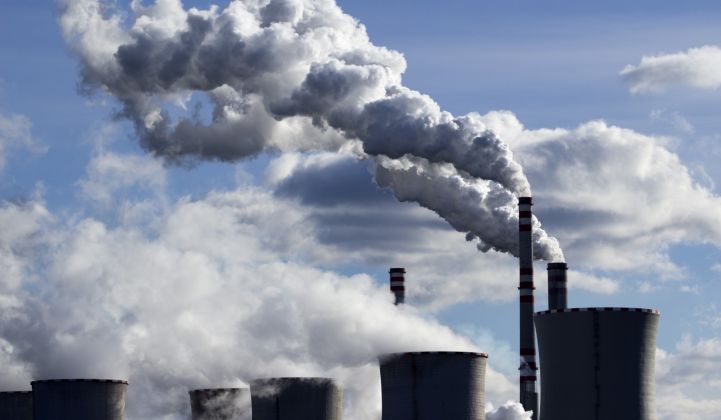The coronavirus pandemic will depress U.S. electricity markets and hurt generators in 2020, the U.S. Energy Information Administration says — even the fast-growing wind and solar power sectors.
On Tuesday, the EIA revised its forecast for the U.S. electric power sector generation to include the COVID-19 outbreak’s massive economic disruptions. While the oil and gas industries face the greatest risks, the EIA’s latest Short-Term Energy Outlook also predicts steep declines in commercial and industrial electricity demand as well as a significant decline in new generation capacity as a result.
EIA now expects retail sales of electricity to the commercial sector to fall by 4.7 percent in 2020 as businesses close and industrial sales to fall by 4.2 percent as factories cut back production. And while residential customers will likely increase electricity use under stay-at-home orders, predicted milder winter and summer weather will still lead to a modest 0.8 percent decline in electric sales, EIA says.
Similar views on a coming U.S. recession led ratings agencies Moody's and S&P to lower to "negative" their outlooks for utilities and power-generation projects over the past week. In a Tuesday note, Moody’s wrote that “the dual shock of power demand destruction from businesses shutting down and a natural gas oversupply will further pressure power prices and operating margins in 2020 before rebounding in 2021.”
Utilities that earn a regulated rate of return on their investments are more cushioned from the impacts of falling demand for electricity, while unregulated merchant generators that lack long-term contracts with buyers or capacity market payments are at higher risk.
These drop-offs in demand will drive down total U.S. electric power sector generation by 3 percent in 2020, EIA has forecast. Coal-fired power plants, already struggling to compete with cheaper natural gas and renewables, will see the biggest decline of about 20 percent over the year, whereas natural-gas generation is expected to increase by a slight 1 percent because of new generation capacity and lower fuel costs.
While EIA expects renewable energy to retain the title of the fastest-growing source of electricity generation in 2020, it also predicts the coronavirus pandemic will slow progress over the next few months. EIA expects that 19.4 gigawatts of new wind capacity and 12.6 gigawatts of utility-scale solar capacity will be built in 2020, figures that are 5 percent and 10 percent lower than its previous forecasts, respectively.
EIA’s new outlook lines up with the vast majority of expert opinion on the COVID-19 outbreak’s negative effect on power markets across the globe. In a new report, Wood Mackenzie Power & Renewables predicts that peak demand for power will see multi-gigawatt declines in Texas and the mid-Atlantic region served by grid operator PJM.
WoodMac has also predicted that between 2 to 5 gigawatts of new U.S. utility-scale solar capacity could be delayed in 2020, depending on how deeply supply and construction holdups affect project development. The wind and solar industries are asking Congress to extend tax-credit deadlines and convert credits to direct payments to prevent the worst effects, but it’s unclear if lawmakers will take up those concerns when they begin work on the next coronavirus rescue package later this month.
EIA also predicted that energy-related carbon dioxide emissions will decrease by 7.5 percent this year, well outpacing last year’s 2.7 percent decline, as a slowing economy and restrictions on business and travel activity cut emissions from the generation and transportation sectors.




